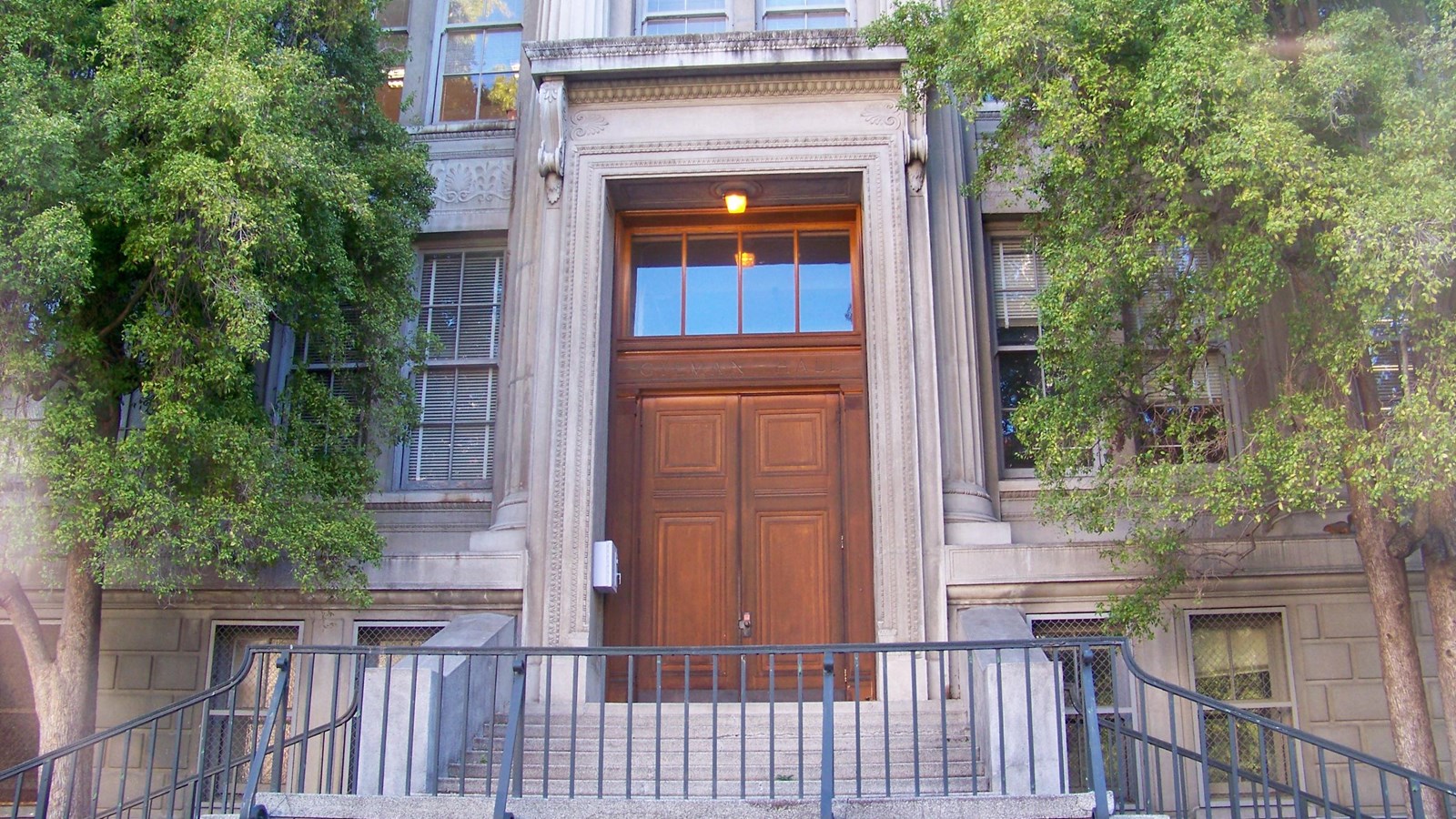Last updated: September 16, 2020
Place
Gilman Hall, University of California

Photo by Coro, CC BY-SA 3.0, https://commons.wikimedia.org/w/index.php?curid=20716987
Gilman Hall was built from 1916 to 1917 to accommodate an expanded College of Chemistry under the leadership of Gilbert Newton Lewis. Designed by John Galen Howard, the building provided research and teaching facilities for faculty and students specializing in physical, inorganic and nuclear chemistry. Located in Gilman Hall's "attic" space, Room 307 is where Glenn T. Seaborg and his coworkers identified plutonium as a new element on February 23, 1941. Although the possibility of extending the periodic table of elements had been considered many times, the hope of extension did not become realistic until 1934, when artificial radioactivity was discovered. Ninety-two elements were then known, but in 1940, the first of the man-made elements was developed, Neptunium, number 93, an isotope of Uranium. A few months later five co-workers--Arthur Well, Edwin MacMillan, Glenn Seaborg, Emilio Segre, and J.W. Kennedy--shared in the discovery of element number 94, Plutonium, created by the same process that produced Neptunium number 93. Doctors' Seaborg and MacMillan were later awarded a Nobel Prize in Chemistry in 1951 for their discoveries in the chemistry of the transuranium elements.
In 1942, the Berkeley campus became quite involved in the war effort of World War II. The top floor, or "attic," of Gilman Hall was fenced off for classified work in nuclear chemistry. Half of the rooms in the attic had small balconies that could be used as outdoor hoods, but the actual hoods in Gilman Hall were not equipped with fans. They operated only as chimneys, with a burner flame that produced a draft. For the war work, electrically powered fans were finally installed to vent the hoods. Plutonium research in Gilman Hall was part of the Manhattan Project to develop the atomic bomb. In 1942, Glenn Seaborg left Berkeley to join the Manhattan Project in Chicago. He returned to Berkeley after the war and directed the university's nuclear chemistry research.Room 307, Gilman Hall, was declared a National Historic Landmark in 1966 on the 25th anniversary of the discovery of plutonium. All of Gilman Hall was designated a National Historic Chemical Landmark in 1997, followed by its listing in the National Register of Historic Places in 2003. Gilman Hall has been used continuously by the College of Chemistry for 80 years; today it is occupied by the Department of Chemical Engineering.
Room 307, Gilman Hall, University of California is located in the Central Campus Area of the University of California, Berkeley. For more information or visit the University of California, Berkeley website.
